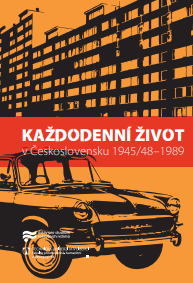Média v Československu v letech 1945–1989 a jejich vliv na každodenní život
Media in Czechoslovakia 1945-1989 and their participation on forming the everyday life of the inhabitants
Author(s): Petr Bednařík
Subject(s): Media studies, Political history, Social history, Recent History (1900 till today), WW II and following years (1940 - 1949), Post-War period (1950 - 1989), History of Communism
Published by: Ústav pro studium totalitních režimů
Keywords: Czechoslovakia; media; 20th century; everyday life; communist regime;
Summary/Abstract: From 1945 to 1948 the media in Czechoslovakia lived through rough changes. The system of media was established on the bases that the main publishers of the periodicals were to be only political parties and state institutions. Private enterprise was excluded from the media. The time of changes claimed the existence of many periodicals from the first republic and gave life to some new ones, which were released during the rest of the existence of the communist regime. After the end of the world war a new system was introduced, which rationed paper to issuers and publishers. The system was in existence till 1980s and became a tool to favor some periodicals or authors. Offer did not meet demand and readers had often a problem to buy their favorite magazine or a book of their fancied author. During the fifties the regime started to closely watch over all media information passed forward to Czechoslovak citizens. The Central Press Supervision Office was established to control newspaper, magazines, television and radio broadcasting, screenplays, theater productions and even maps and postcards through precensorship. Citizens were constantly persuaded by the media that the communist regime is the best one and therefore every citizen should support the policy of the Communist party. The television broadcasting started in Czechoslovakia in 1953, but its reach was extended slowly over the territory. The basic net of transmitters was completed in 1961, when the broadcasting incidentally reached the number of one million concessionaires. During the sixties the TV became an increasingly more popular form of spending leisure time and its viewers balanced the number of radio listeners. In the time of Prague spring the media distinctively supported policy of Dubček’s communist leadership. People learned important information about actual political situation from the media. During August 1968 the media also informed people about the Warsaw pact forces invasion. During normalization the media were under control of the communist party and supported its home and foreign policy. From 1970 the TV broadcasted on two channels and the Czechoslovak radio also changed the channel structure, which stayed till the fall of the communist regime.
Book: Každodenní život v Československu 1945/48-1989
- Page Range: 49-91
- Page Count: 43
- Publication Year: 2015
- Language: Czech
- Content File-PDF

